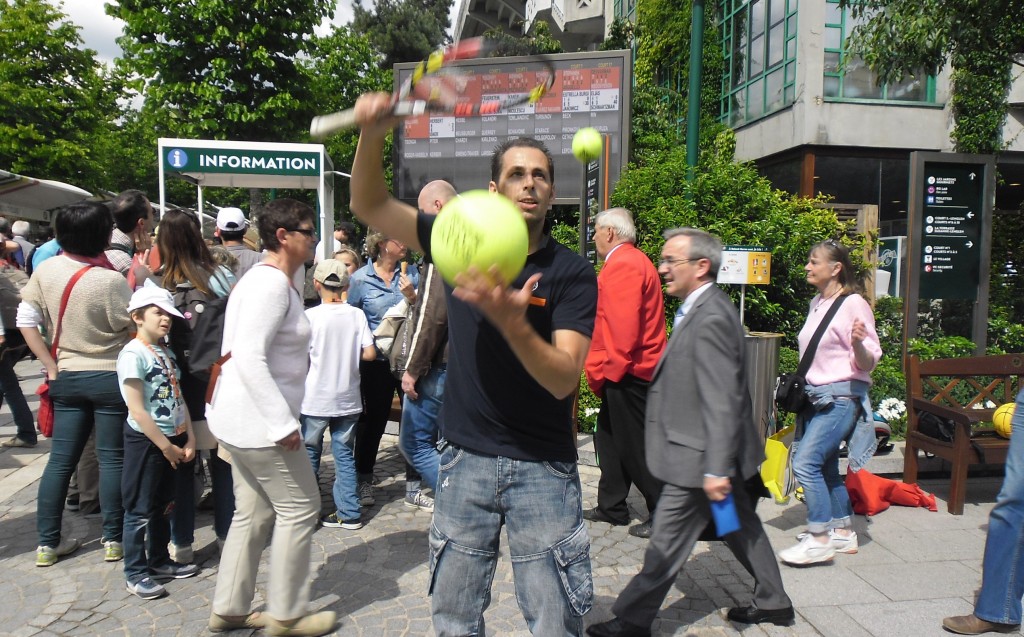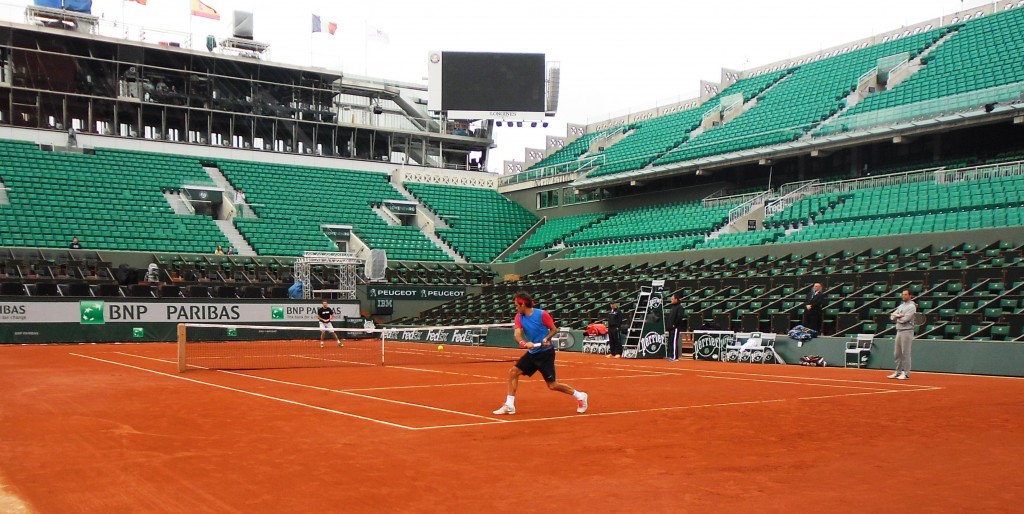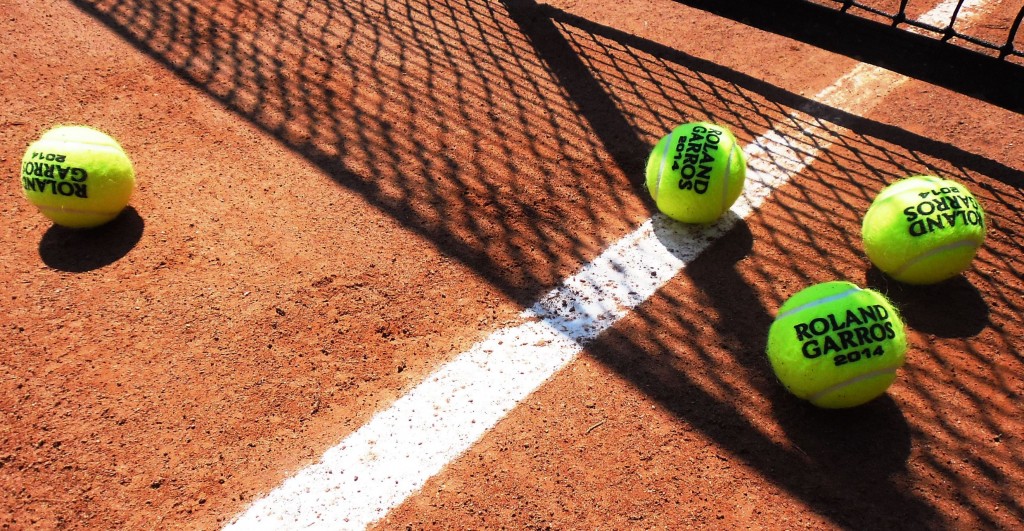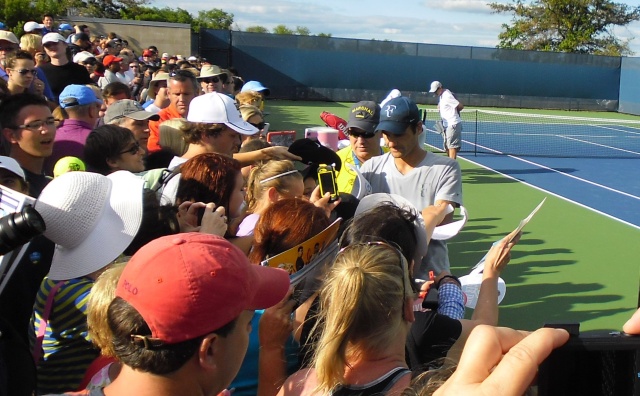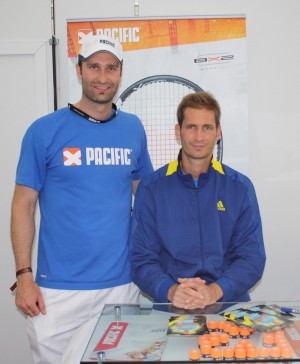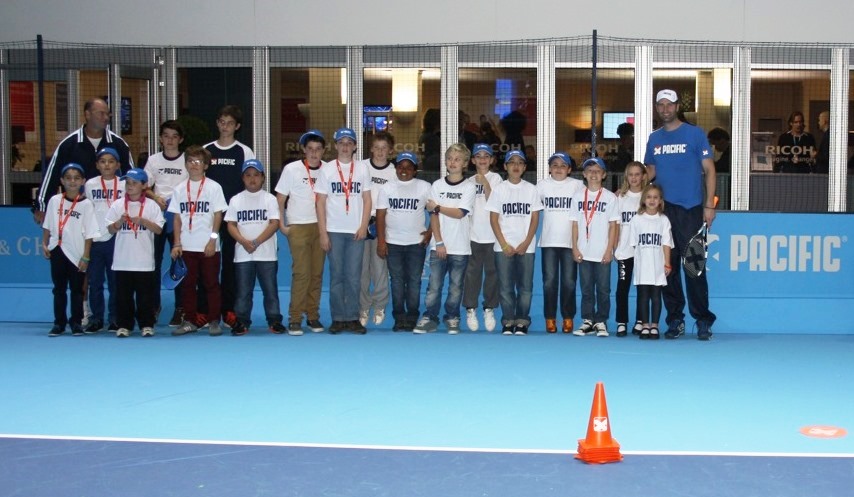Back in 2008, I wrote an article titled ‘Something different to do in 2008’ about tennis tournaments that you will not read much about in the general media, however they are worth attending, because they have separated themselves from many other calendar ITF events. The Gallipoli Youth Cup (GYC) is one such event, and it just kicked off in Melbourne, Australia.
With yesterday’s first round matches, the GYC has entered its sixth year and along the way this tournament has created history in many ways. However in terms of creating ground breaking history, with influential figures supporting GYC, 2014 and 2015 will be very important years for this event.
Pat Cash (1987 Wimbledon Men’s Singles Champion) and Umit Oraloglu (successful businessman and second generation Australian from Turkish parents), are the co-founders of the GYC. I asked the latter several questions regarding the past 6 years and what the future holds for the tournament.
How did the GYC come about and why is it so different from other ITF junior tournaments?
Umit: In Australia, we are all educated at school about the Gallipoli campaign, where during World War 1, Australian and New Zealand soldiers (known as the ANZACs), formed part of an Allied expedition that set out to capture the Gallipoli Peninsula (the European side of Turkey), under a plan to open the way to the Black Sea for the Allies. Even though the Gallipoli campaign failed in its military objectives, the landing at Gallipoli made a profound impact on Australians and New Zealanders at home and 25th of April became the day on which they remembered the sacrifice of those who died in war.
Since sport is inherently a big part of Australia, Pat Cash and I thought (in conjunction with Tennis Australia), what better way to give our youth the opportunity to commemorate our war veterans through ongoing participation and competition in sport by establishing the Gallipoli Youth Cup.
Not only are the junior players commemorating the fallen soldiers, we also created a “School Commemoration Program,” where year 6 students from various primary schools can participate in tennis activities and education programs commemorating the fallen soldiers at Gallipoli.
The GYC is now the only International junior tennis tournament in the world where the tennis players and school students commemorate the fallen soldiers.
Even though the GYC was established in 2008, it took 4 long years to get it off the ground due to unimaginable twists and turns. What were these twists and turns?
Umit: In 2004, Pat Cash and I traveled to Turkey, so we could create a tennis event by commemorating the fallen soldiers at Gallipoli. The event was called ‘Anzac Legends Cup’ (ALC) and the concept was to have two past legend tennis players from two of the countries that lost soldiers at Gallipoli, to play an exhibition match and then the following year, add another two players to the event (from two other countries).
Other than Turkey, Australia and New Zealand, countries such as France, Canada, England, South Africa, Ireland, India etc.. also lost soldiers at Gallipoli. With this being the case, in 2005, Pat Cash (Australia) and Henri Leconte (France), competed against each other in the first ever ALC to be held in Istanbul at the renowned Coliseum Centre.
Unfortunately that was to be the first and last ALC because the Turkish Government thought only the countries that lost soldiers at Gallipoli would be interested in the ALC and they wanted to hold a tennis tournament by attracting interest from all over the world, so they wanted Pat Cash and I to organize a WTA or ATP tournament in Turkey. In that same year, with both of us playing a crucial role, a WTA event was held in Istanbul and it was named after the historical city itself, the ‘Istanbul Cup’.
It was like we awakened the sleeping giant because with the success of the ‘Istanbul Cup’, the Turkish Government went on to hold the end of year WTA Championships held between 2011 and 2013.
That being said, after establishing the Istanbul Cup, Pat Cash and I came back to Australia with an empty sense of feeling. Our initial goal for going to Turkey was to annually commemorate the fallen soldiers through a tennis event, and we didn’t achieve our goal.
After giving it some thought, we noticed that at a senior level, the codes of Australian Rugby League and Australian Rules Football held matches to commemorate our war veterans, however there was no event held at a youth level. After consulting with Craig Tiley, CEO Tennis Australia (then Director of Tennis Australia), I’m proud to say, we eventually created the GYC.
So far in this journey, what has been the highlight of the GYC?
Umit: There have been so many highlights, however if I had to narrow it down to a few, I would have to say, since 2008, we have educated thousands of school kids about the Gallipoli campaign and this will continue for many years to come.
Also in 2013, for the first time we had 12 Turkish junior tennis players compete at the GYC. These kids created long lasting friendships with players from Australia and New Zealand. Last but not least, to celebrate our achievements, last year we invited Mr. Turgut Kacmaz – 77 years old and the son of the last Turkish veteran at Gallipoli – to be the special guest at our Gala Dinner. He also handed out the trophies to the singles and doubles winners of the GYC, which attracted profound media coverage from all over the world.
This year there was a major development with Tennis Australia announcing that the GYC is now one of the major projects of the Australian Tennis Foundation. However, since 2015 will be the 100th anniversary of the Gallipoli landing, what plans are in place to mark this special occasion?
Umit: Yes it was definitely a major development. Just before this year’s Australian Open, the Australian Tennis Foundation held one of its first projects by teaming up with Roger Federer’s Foundation and raising valuable funds for both foundations.
The event was called, “A night with Roger Federer and friends,” which was a televised event and it ended up raising more than $1 million on the night. It just makes me so happy that the GYC has reached a certain level, where it’s now officially going to be run by the Australian Tennis Foundation.
Re 2015, this year will be very special. We have two major objectives. The first is to educate five thousand students during the tournament through our “School Commemoration Program” (which has never been achieved before) and the second is to invite junior tennis players from all the countries that lost soldiers at Gallipoli, so that we can continue promoting the notion of mateship. These countries are Turkey, England, New Zealand, France, Canada, South Africa, Ireland, India, Bangladesh, Nepal, Pakistan, Senegal and Algeria.
Umit, this sounds fantastic! Any last thoughts?
Umit: Yes. Even though Pat Cash and I are the co-founders of the GYC, there are two people that also played a very important role in making the GYC a huge success. From day one, Craig Tiley and Michael Annett (CEO of Victorian RSL Branch) understood the concept of the GYC and I can’t thank both of them enough. For more information on the GYC and to see what we have achieved in the past six years, everyone can log onto www.gallipoliyouthcup.com
Note: Log onto the website to get the latest scores and results, unless you live in Melbourne, in which case, you should attend the tournament and see the future stars.
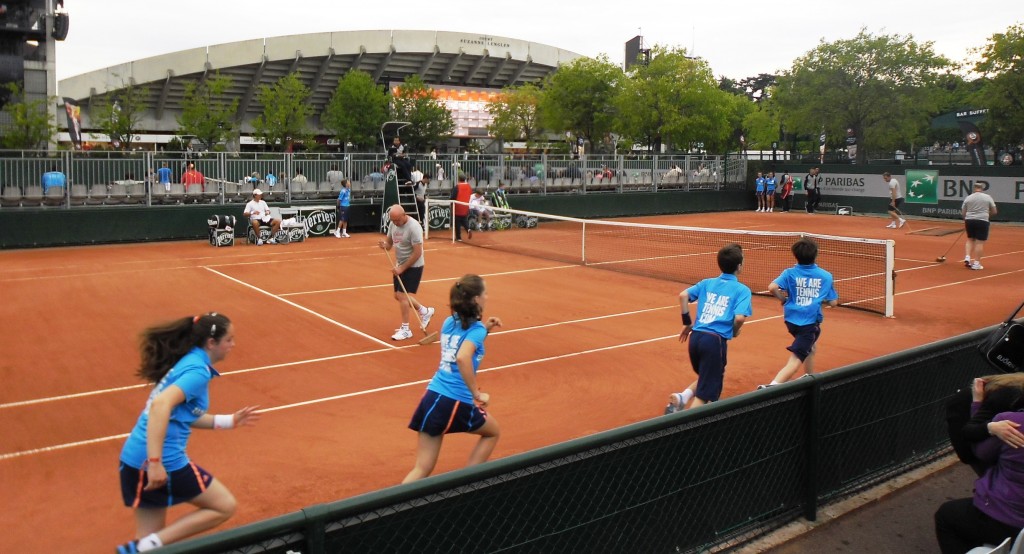 Maintenance crew and ball boys & girls always working hard. You can see them even warming up next to their court prior to the match.
Maintenance crew and ball boys & girls always working hard. You can see them even warming up next to their court prior to the match.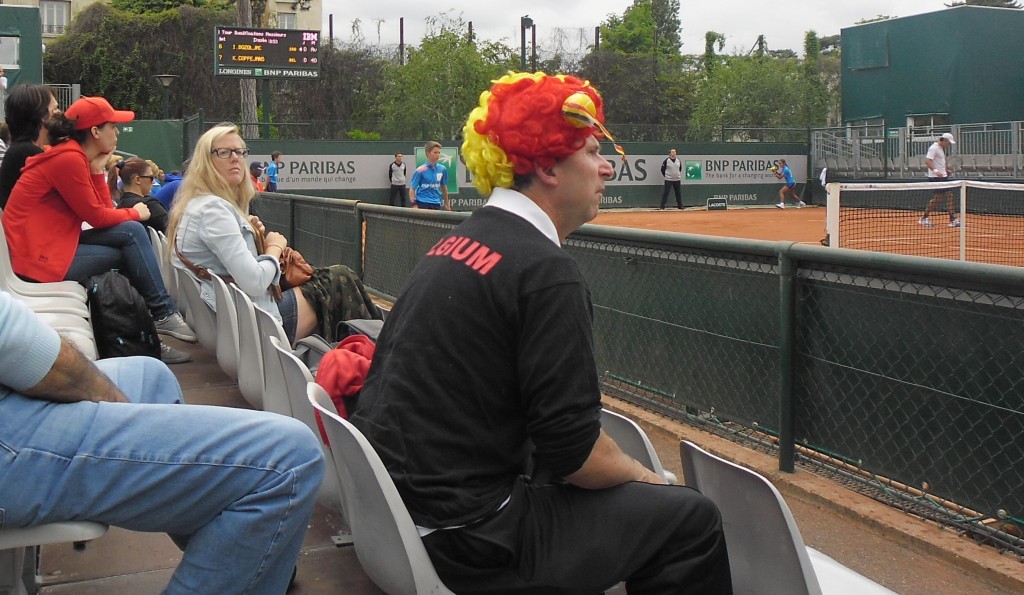 Some fans really get into supporting their compatriots.
Some fans really get into supporting their compatriots.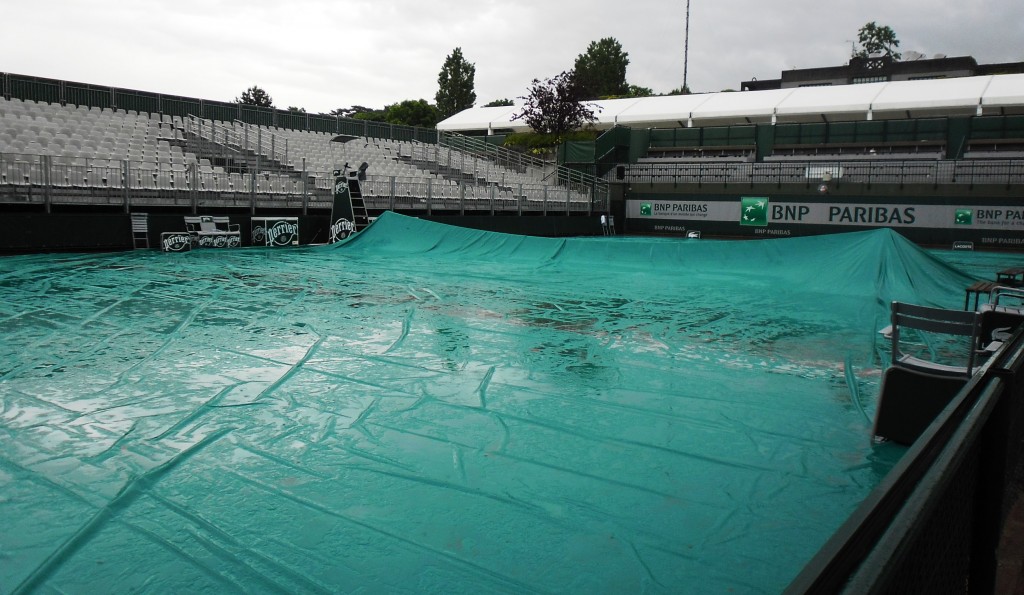 Rain always a factor at Roland Garros.
Rain always a factor at Roland Garros.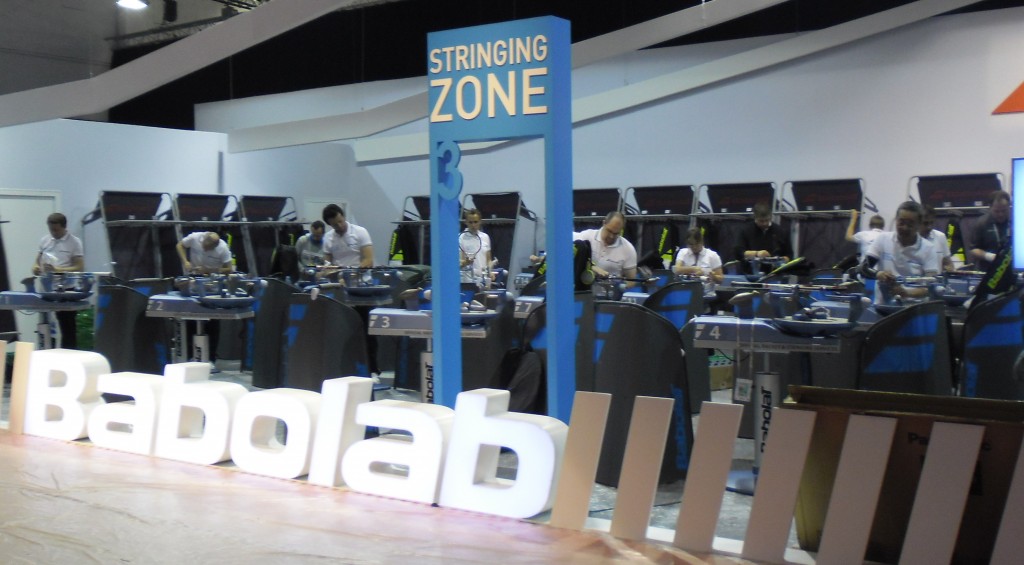 Stringers also hard at work. There are always 15 to 20 of them stringing away. Rackets come and go all the time. Many have bands around their hands or fingers to avoid blisters. Some players require that the same person always string their rackets.
Stringers also hard at work. There are always 15 to 20 of them stringing away. Rackets come and go all the time. Many have bands around their hands or fingers to avoid blisters. Some players require that the same person always string their rackets.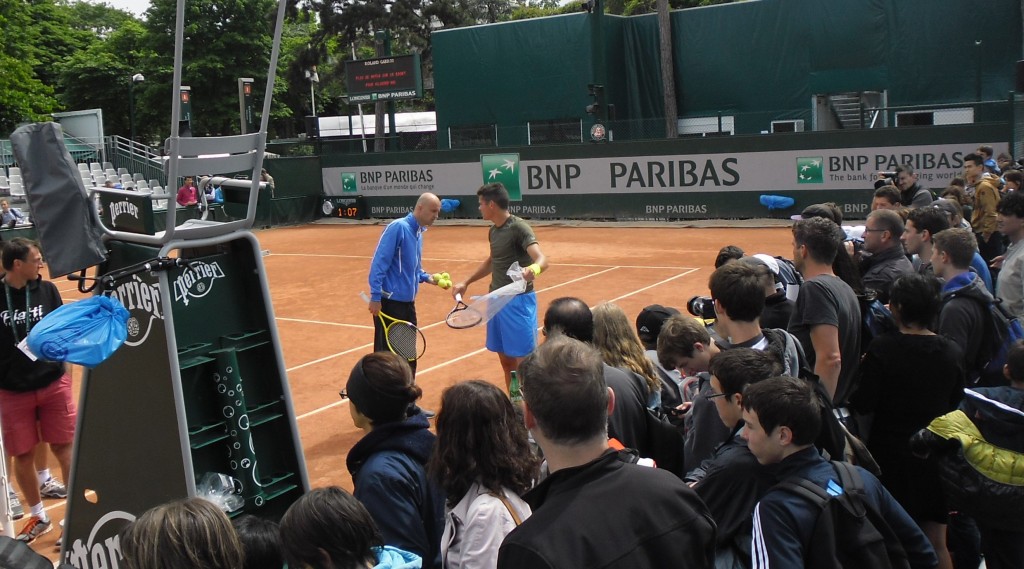 Milos Raonic and his coach Ivan Ljubicic getting ready for a practice session.
Milos Raonic and his coach Ivan Ljubicic getting ready for a practice session.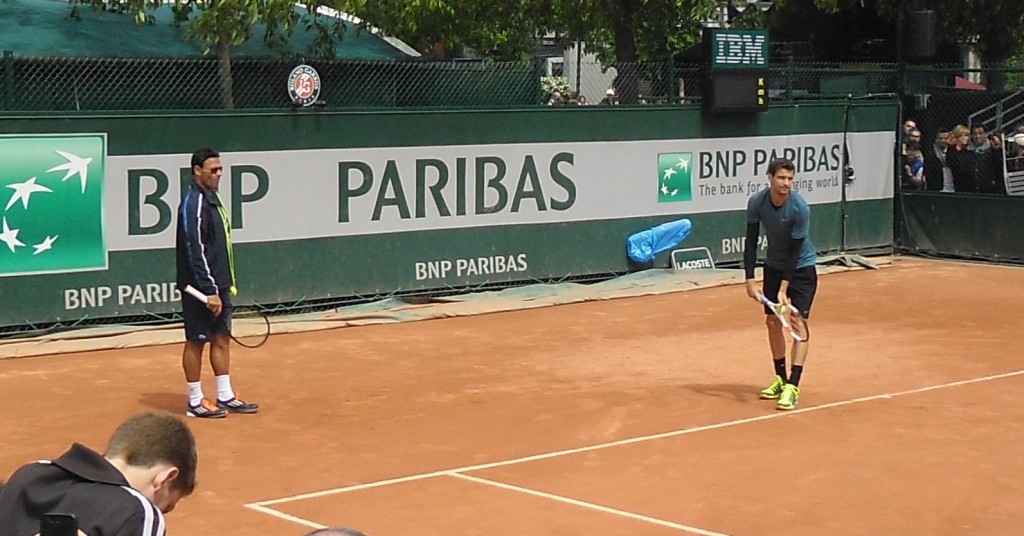 Roger Rasheed watching his pupil Grigor Dimitrov practice serves.
Roger Rasheed watching his pupil Grigor Dimitrov practice serves.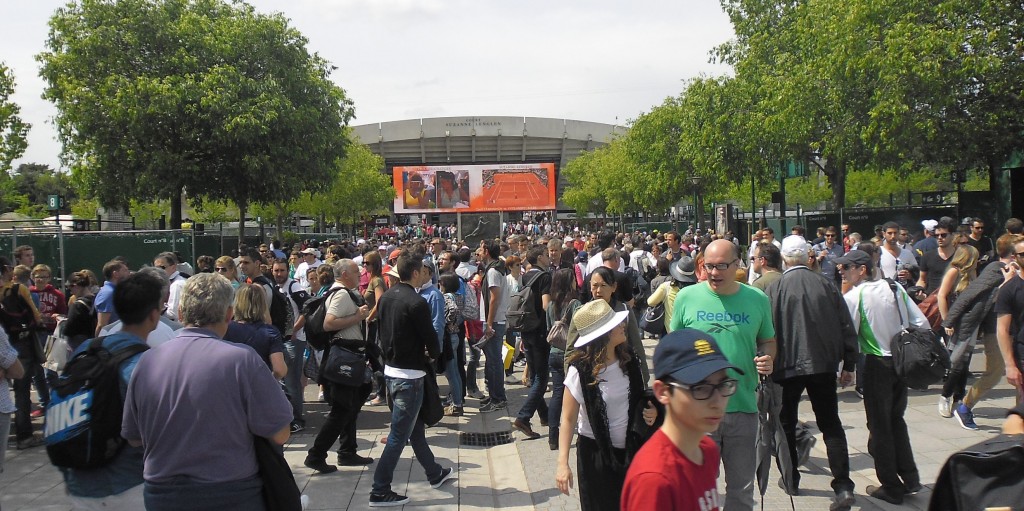 Roland Garros’ biggest problem with no real solution in sight: overcrowded grounds. I have beaten this topic to death so I will spare the readers my rant this time.
Roland Garros’ biggest problem with no real solution in sight: overcrowded grounds. I have beaten this topic to death so I will spare the readers my rant this time.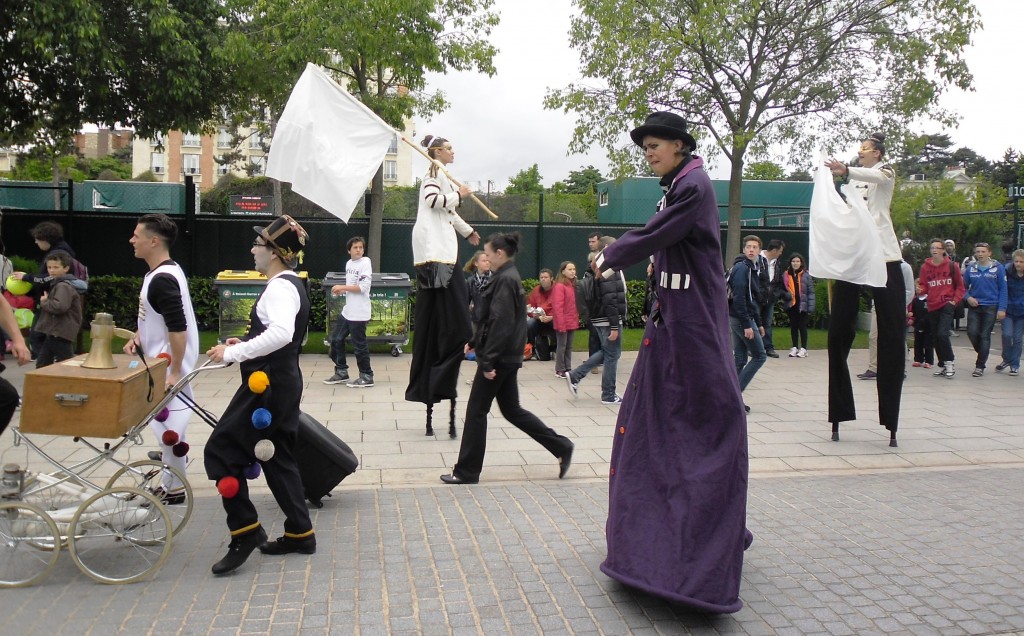 But then, there is also this as entertainment…
But then, there is also this as entertainment…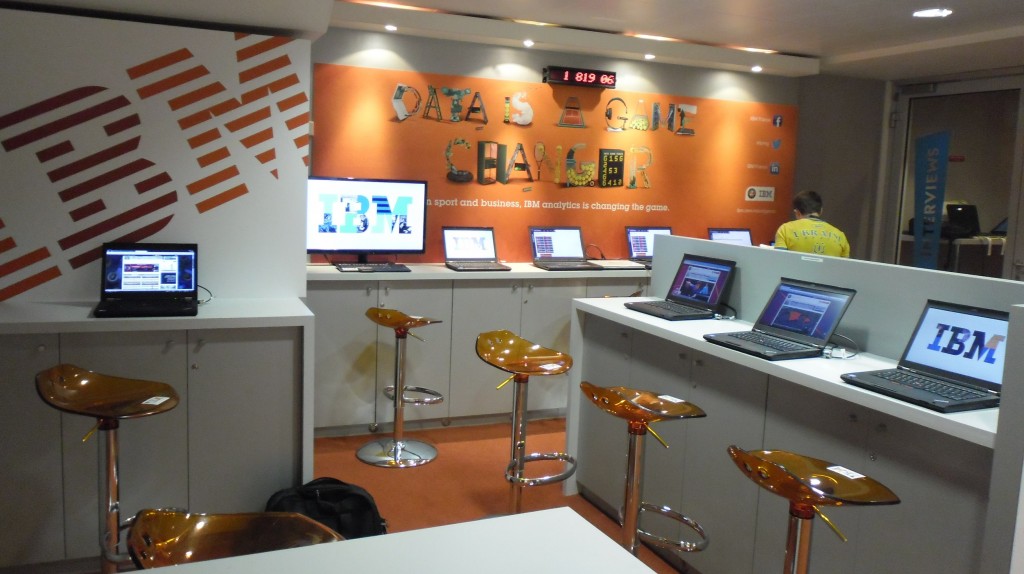 Some of the computers available for the media.
Some of the computers available for the media.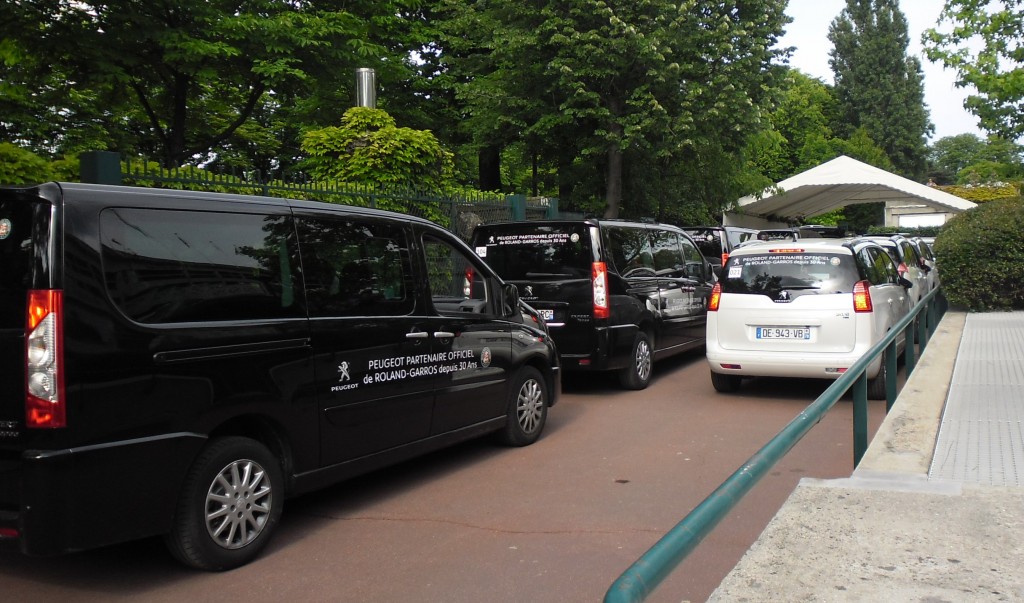 Some of the official transportation cars for tournament players and other ‘important’ people. They are equipped with Wifi! The word is players are highly pleased about that.
Some of the official transportation cars for tournament players and other ‘important’ people. They are equipped with Wifi! The word is players are highly pleased about that.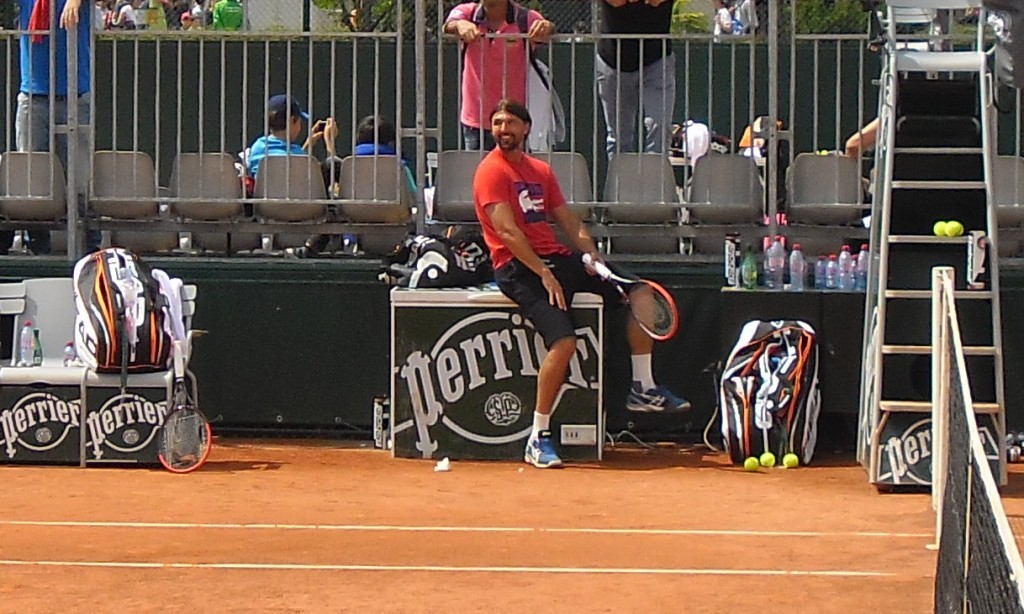 Coach and legendary ex-pro Goran Ivanisevic looking extremely relaxed while watching his player Marin Cilic practice.
Coach and legendary ex-pro Goran Ivanisevic looking extremely relaxed while watching his player Marin Cilic practice.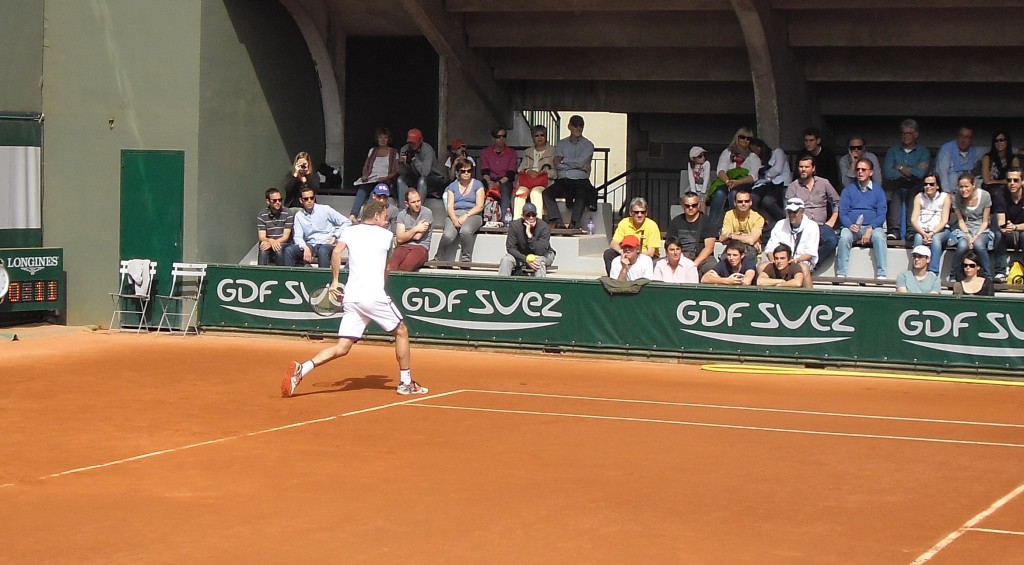 For those who enjoy one handed backhands.. Filippo Volandri has a beautiful one-hander, but that is all he has!
For those who enjoy one handed backhands.. Filippo Volandri has a beautiful one-hander, but that is all he has!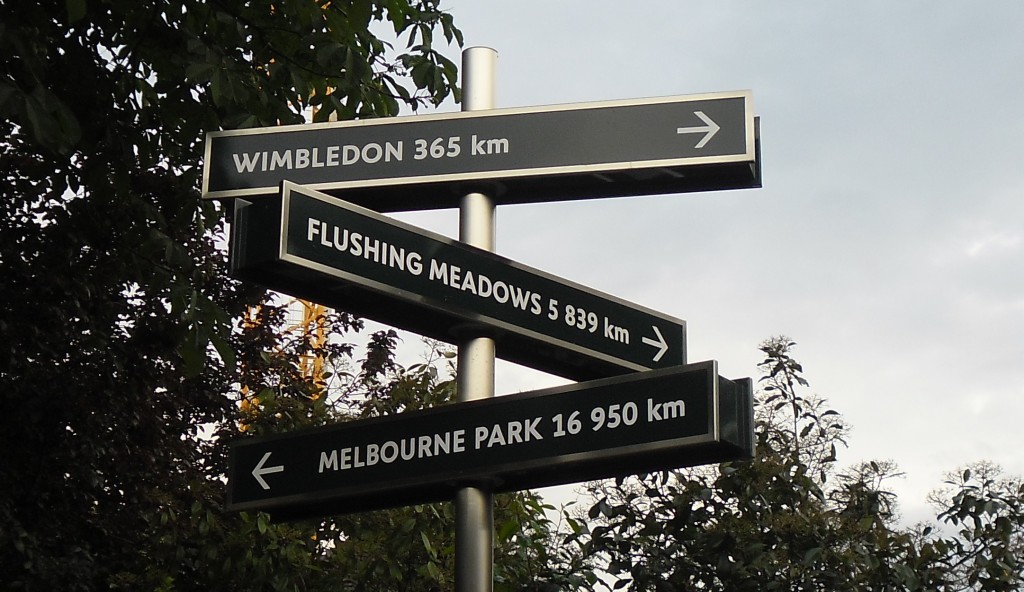 Just in case, you are planning your next trip to a Slam tournament!
Just in case, you are planning your next trip to a Slam tournament!
